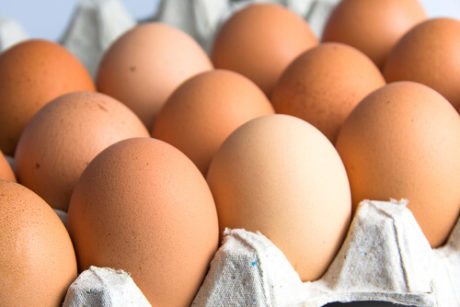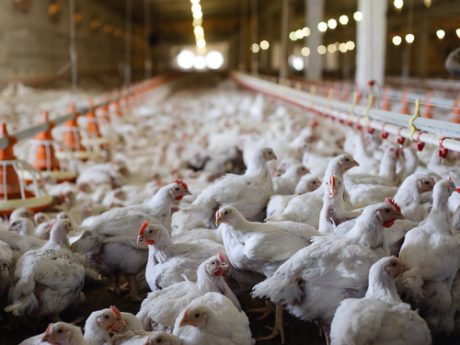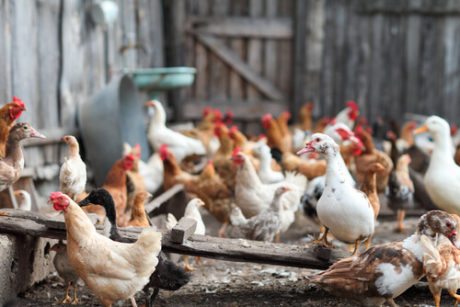The chicken business is especially prone to failure from a disregard of the common essential relation of cost and selling price necessary to the success of any business. That this should be more true of the poultry business than of any other undertakings is to be explained by the facts that as a business, it is new, that many of those who engage in it are inexperienced, but most particularly because practically all the literature published on the subject has been written by or written in the interest of those who had something to sell to the poultryman. As a result, the figures of production are generally given higher than the facts warrant. The investor, be he ever so shrewd a man, builds upon these promises and when he finds his production lower, is caught with an excessive investment and a complicated system on his hands, which make all profits impossible and which cannot readily be adapted to the new conditions.
 Estimates of poultry profits are quite common, but there are few published figures showing the results that are actually obtained under practical working conditions. In this volume, I will try to give the facts of what is being and can be actually accomplished.
Estimates of poultry profits are quite common, but there are few published figures showing the results that are actually obtained under practical working conditions. In this volume, I will try to give the facts of what is being and can be actually accomplished.
Various Poultry Products.
In considering the poultry industry we must first get some idea of the various articles produced for sale.
It is common knowledge that the large meat packer can undersell the small packer because of the by-products, such as bristles, which are wasted by the local killer, are a source of income to the large packer. Now, this does not infer that the small packet is shiftless and neglects to save his bristles, but that on the scale on which he operates it would cost him more to save the bristles than he could realize on them.
So it is with poultry farming. For illustration: A visionary writer in a leading poultry paper, not long ago, advised poultrymen to store eggs. In reality, this would be the height of folly, unless the poultryman had his own retail store. In the first place profit on cold storage eggs, when all expenses are paid, will not average a half a cent a dozen; in the second place, the small lot would be relatively troublesome and expensive to handle, and in the third place, small lots of cold storage eggs are looked upon with suspicion and do not find ready sale. So we see that cold storage eggs are not a suitable product for the small poultryman to handle.
The second illustration of an ill-chosen combination might be taken in the case of a duck farmer who attempts to produce broilers. The principal difficulty of the duck business is that of getting sufficient intelligent labor in the rush season. The chief expense of investment is for incubators and brooder houses. If the duck farmer now tries to add broilers, he will find that the labor comes at the same time of the year, that the chief equipment required is that which is already crowded by the duck business, and that of the men who have succeeded moderately well in caring for ducks will fail altogether with the young chicks, which do not thrive under the same machine-like methods.
On the other hand, let us take the example of an egg farm man who has resolved to combine his attention wholly to the production of market eggs. He succeeds well in his work and is visited by the poultry editors. His picture, the picture of his chickens and of his chicken houses, are printed in the poultry papers. For a reasonable sum invested in advertising and in an exhibition at the shows, this man could now double his income by going into the breeding stock business. To refuse to spread out, in this case, would certainly be foolish.
The following classification of the sales products of the poultry industry is given as a basis for further consideration.
CHICKENS
For food purposes:
Eggs.
Hens, after laying has been finished.
Cockerels, necessarily hatched in hatching pullets for layers.
(Sold as squab broilers, regular boilers, springs, roasters or capons.)
Both sexes as squab broilers, broilers or roasters.
For stock purposes:
Eggs for hatching.
Day-old chicks.
Mature fowls.
DUCKS.
For table—green or spring ducks.
By-products, old ducks, and duck feathers.
For breeding stock.
GEESE.
Food, Feathers, Breeders.
TURKEYS.
Food, Breeders.
PIGEONS.
Squabs, Breeding Stock.
GUINEAS.
Broilers, Mature Fowls.
I will now discuss these products more in detail. Poultry, other than chickens, I do not care to discuss at length, because it is not for the purpose of the book, and because the demand for other kinds of poultry is limited and the chance for the growth of the business small.
The Duck Business.
The duck business is the most highly commercialized at the present time of any branch of the poultry business. The duck is the oldest domestic bird and was hatched by artificial incubation in China when our ancestors were gnawing raw bones in the caves of Europe. The duck is the most domestic of birds and will thrive under more machine-like methods and without that touch of nature and of the owner’s kindly interest so necessary to the welfare of the fowls of the gallinaceous order. The green duck business is about twenty years old and has become an established business in every sense of the word. The largest plants now produce about one hundred thousand ducks per annum. The profits at present are not large even for the most successful plants because the demand is limited and the production has reached such a point that cost of production and selling price bear a definite relation as in all established businesses. The green duck business is not an easy one for the novice because the margin between cost (chiefly food cost) and selling price is low, and unless the new man can reduce the cost of production or raise his selling price in some way, he will have no advantage over the old and successful firms.
Squab Business Overdone.
The business of producing pigeon squabs resembles the duck business in the sense that it has been reduced to a successful system. The production of squabs has grown until the demand is satisfied and the price has fallen to just that figure that will continue to bring in a sufficient number of squabs from the plants which are already established, or which continue to be established by those who do not stop to investigate the relation between the cost of production and the prevailing prices.
Turkeys Not a Commercial Success.
In the case of turkeys, we find exactly opposite conditions. The price of turkeys has risen with the price of chickens and eggs until one would think that there would be great money in the business, and there is, for the motherly farm wife who has the knack of bringing the little Turks through the danger of delicate babyhood. But just as the duck is more domesticated than the chicken, so the turkey, which yet closely resembles its wild ancestor, is less domestic and has as yet failed to surrender to the ways of commercial reasoning, the chief factor of which is artificial brooding.
The presence of a disease called blackhead has done vast injury to the turkey industry in the northeastern section of the country. In the South, the industry has been booming. Especially in Tennessee and Texas, I found great local pride in the turkey crop. I certainly would advise any farm wife, in sections where blackhead does not prevail, to try her hand at turkey raising. As to her advisability of continuance in the business, the number of turkeys at the end of the season will be the best judge.
Guinea Growing a New Venture.
The guinea growing business is the newest of the poultry industries. In fact, it may be said of guineas, as of our grandmother’s tomatoes, “Folks had them around without knowing they were of any use.” The new use for guineas is a substitute for a game. Guinea broilers make quail-on-toast and older ones are good for grouse, prairie chicken or pheasant. The retail price in the large cities runs as high as $1.50 to $2.00 a pair. It will probably not pay to raise them unless one is sure of receiving as much as 50 cents each. As for the rearing of guineas, they may be considered on a parallel case with turkeys, if anything they are even more difficult to raise in large quantities. I would also advise this additional precaution: Look up the market in the locality before attempting guinea rearing.
Geese—the Fame of Watertown.
As for the goose business, the writer must admit that he doesn’t know much about it. In fact, the most of my knowledge concerning this business was acquired by a visit to Watertown, Wis., which is the centre of the noodled goose industry
The Watertown geese are fed by hand every two hours day and night. They sell to the Hebrew trade at as much per pound as the goose weighs, and have brought as high as $14.00 apiece. All of this is interesting, but I hold that the reader who is willing to take instruction will do better to be guided toward those branches of the poultry industry for the products of which there is a great and increasing demand. So we will leave the goose and guinea business to the venturesome spirits and consider the various branches of the chicken industry.
The Ill-omened Broiler Business.
 The broiler business stands to-day as the ill-omened valley in the poultry landscape. As a rule broiler production has not and probably will not pay. I know of a few exceptions—about enough to prove the rule.
The broiler business stands to-day as the ill-omened valley in the poultry landscape. As a rule broiler production has not and probably will not pay. I know of a few exceptions—about enough to prove the rule.
Most poultry writers, when they make the statement that broilers do not pay, insert the phrase “As an exclusive business” after the word broilers. This is merely a ruse to take the rough edge off an unpleasant statement, for it certainly hurts the poultry editor to admit that a much-exploited branch of the industry is a failure. Nevertheless, it is a failure and the more frankly we admit the fact, the less good capital and good brains will be wasted in the attempt to produce at a profit something which is, and probably always will be, produced at a loss.
The reason the broiler is produced at a loss is that 95 per cent. of the broilers produced is a by-product of egg, fancy and general poultry production, and as such their selling price is not determined by the cost of production or the supply determined by the demand. That the broiler business received the boom that it did, is due to plain ignorance of the cost of production, or to the appreciation that the ability to rear young chicks could find a more profitable outlet than in broiler production. Let us take an analogous case. Suppose a city man should discover the fact that there was a demand for dried casein from skim milk. With pencil and paper, he could easily figure profits in the business. If this dreamer would attempt to keep cows for the production of casein and throw away his butterfat, we would have an analogous case to the broiler raiser who does not keep his pullets for egg production.
The young cockerel, like skim milk, is a by-product and may pay the cost of feeding, or some other specific item, but that he does not pay the whole cost, including wages for the manager is proven by two facts: First, every large broiler plant yet started has either failed flatly or shifted its main line to other things; second, egg farmers would be only too glad to buy pullets at the price for which they sell the cockerels—a confession that it costs more to produce broilers than they will bring.
The conception of the broiler business when it was boomed twenty years ago was to produce broilers in early spring when other folks had none. It was, like the early watermelon, or the early strawberry business—to make its profits at extreme prices.
This idea received several severe blows from the hands of modern progress. One is the development of poultry fattening and creates feeding in this country. This has resulted in supplying the consumer with choice chicken-flesh that can be produced more economically than broilers. Formerly it was a case of eating old hen—rooster, age unknown, or broilers—now we have capon, roaster, crate-fattened chickens and green ducks, all rivals for the place formerly occupied exclusively by the broiler.
Again, the improvement of shipping and dressing facilities, the universal introduction of the refrigerator car and the introduction into the central west of the American breeds, has flooded the eastern market with a lot of spring chickens—by-products of the egg business on the farm—which are almost equal in quality to the down-eastern product.
The most prominent reason for the lessened profit in broilers is the development of the cold storage industry. Cold storage destroys the element of the season and allows only that margin of profit that the consumer is willing to pay for a freshly killed broiler from a Jersey broiler plant, as compared with last summer’s product from the Iowa farms. From a summer copy of Farm Poultry, I quote the Boston market:
Fresh killed Northern and Eastern:
Fowls, choice 15c
Broilers, choice to fancy 23-25c
Western, ice packed:
Fowls, choice 14c
Broilers, choice 20-22c
Western frozen:
Fowls, choice…………….. 14c
Broilers, choice…………..18-20c
Eggs:
Nearly fancy……………… 26c
Western choice……..17-1/2-18-1/2c
To complete our comparison I turn to the previous winter and find that the best storage eggs are quoted at 19c when the best fresh are selling at 35c. This was a poor storage season and a quotation of 22c and 25c would perhaps be a fairer comparative figure. We find the percent, of a premium on the local product to be:
Fowls, local over fresh western……….. 7 percent.
Fowls, local over frozen western………. 7 percent.
Broilers, local over fresh western……..14 percent.
Broilers, local over frozen western…….26 percent.
Eggs, local over fresh western…………30 percent.
Eggs, local over storage western……….37 percent.
I consider these general facts concerning the failure of broiler production, and the logical explanations were given, as far more convincing than any figures I could give concerning the detailed cost of production. Nor am I capable of giving as accurate figures as I can in the case of poultry keeping for egg production, for I have had neither the desire nor the opportunity to look them up. The following suggestive analysis I submit for the purpose of pointing out why the cost of production is too great to allow a profit. We may consider the chick marketing as May, the weight as 1-1/4, and the price as 35 cents a pound, or, putting it roundly a price of 50 cents a bird.
Now, May broilers mean February eggs. If the reader will refer to the tables of hatchability and mortality he will see that for our northern states this is one of the worst seasons for hatching. A hatchability of 40 percent, times a liveability of 50 percent, gives a net liveability of 20 percent. Now, anyone with the ability to produce high-grade eggs at that time a year could get about 40c a dozen for them, which raises the egg cost per broiler to about 17 cents. The feed cost per broiler is small, usually estimated at 12 cents, and this makes a cost of 29 cents. Now, let us allow a cent for the expense of selling charges and forget all about investment, fuel, and incidentals, we have left a margin of 20 cents.
Before going further let us look at the labour bill. Suppose it is a one-man plant. Suppose the owner sets a value on his services of $1,200 per annum. That is pretty good, but few men who set a lower value on their services will have accumulated enough capital to go into the business. At 20 cents each, it will take 6,000 broilers to make $1,200. That will take 30,000 eggs and at three settings will require 40 240-egg incubators, which, of a good make, will cost $1,260. To spread the hatching out over a longer period is to run into cheap prices on the one hand, or a still impossible egg season on the other. It will take upwards of a hundred brooders to house the chicks.
There is no use of going further till we have solved these difficulties. First we have more work than one man can do; second, we require a number of hatchable eggs that cannot be bought in winter without a campaign of advertising and canvassing for them, that would make them cost double our previous figure. To produce them oneself would require a flock of 2,500 hens. When a man gets to that point in the business he is out of the broiler business and an egg farmer, and will do the same thing, hatch the chicks when eggs are cheap and fertile, selling his surplus cockerels for 25 cents each and permit the storage man to freeze them until the following spring to compete with the broiler man’s expensively produced goods.
The effort at early broiler production was a natural result of the combination of the idea of artificial incubation with our grandmother’s pride in having the first setting hen. But in the present age, the man who attempts it is rowing against the current of economic production, for the cheaply produced broiler can be stored until the season of scarcity, with but slight loss in quality. To produce broilers in the season of scarcity necessitates the consumption of a product (eggs) which cannot be so successfully stored, with a lesser quantity of that same product in its season of plenty. We will give the production of broilers no further attention save as a by-product of egg production.
South Shore Roaster.
The production of South Shore soft roasters in a local section of Massachusetts offers a successful contrast with the broiler business and is, so far as the writer knows, the only case in the United States where bullets are profitably diverted from egg production. The process of roaster production is essential as follows:
The incubators are set in the fall or early winter, and the chicks reared in brooder houses. As soon as the tender age is past, the chickens are put in simple colony houses where, with hopper-fed corn, beef scrap, and rye on the range, they grow throughout the winter and spring. They are sold from May 1st to July 1st and bring such prices that the cockerels are caponized yet not sold as capons, showing them to be the highest priced chicken flesh in the market save small broilers. Now, the income of roasters is two to five times as much per head as that of broilers. The added expense is only a matter of feed, which bears about the same ratio to weight as with broilers. The great advantage of the roaster business over that of the broiler business comes in the following points:
1st: The initial expense of eggs, incubation, and brooding are distributed over a much larger final valuation.
2nd: The incubation period, while perhaps in as difficult a season, can be distributed over a longer period of time.
With 8 pound roasters at 30 cents, we have an expense account about as follows: the cost of production to broiler stage, 30 cents as previously given. An additional food cost of 10 cents per pound of chicken flesh would still leave a margin of $1.40, so, for an income of $1,200, only about 860 birds need be raised, a proposition not beyond the capacity of one man to handle.
Allowing a spread of five hatching periods, the number of eggs required at once would be one-twelfth that demanded by the broiler farm. As it is, the roaster grower finds trouble in getting good eggs and is obliged to pay 50 cents a dozen for them, but his want is within the region of possibility.
The South Shore roaster district is an example of an industry built up by specialization and co-operation. But in this sense I do not mean co-operation in production, but that the product is handled by a few dealers and has become well known so that the brand sells readily at an advanced price. To a beginner in the South Shore district, the numerous successes and failures around him cannot help but be of great benefit. The South Shore roaster District of Massachusetts is the best example of a specialized community production of poultry flesh that we have in the United States. It is only rivalled by the districts in the south of England and in France.
In Chapter III the writer takes up fully the community production of eggs. The reason I have gone into this matter in regard to eggs rather than roasters is that the egg production is much the greater industry, and, whereas the soft roaster is at a premium only in a few Boston shops, high-grade eggs are universally recognized and in demand. Many of the economies, especially concerning incubation, would apply equally well to both communities. I expect to see the time when chicken flesh shall be produced with these more advanced methods in many “South Shore” communities.
Too Much Competition in Fancy Poultry.
The various types of chicken farming are classified by what is made the leading sales product. This will depend wholly upon what is done with the female chicks that are hatched. If they are sold as broilers it is a boiler plant; if as roasters, it is a roaster plant; if as stock, it is a fancy or breeding stock business, but if kept for laying the proposition is an egg farm, and all other products are by-products. These by-products are to be carefully considered and sold at the greatest possible price, but their production is incidental to the production of the main crop.
Of the fancy poultry business as the main issue, it must be said that it is certainly a poor policy to start out to make a living doing what hundreds of other people are only too glad to spend money in doing. Just as a homeless girl in a great city is beaten out in the struggle for existence by competition with girls who have good homes, and are working for chocolate money, so the man starting out as a poultry fancier is certainly working at great odds in competition with the professional men, farmers and poultry raisers whose income from fancy stock is meant to buy Christmas presents and not to pay grocery bills.
To enter the fancy poultry business, one should take up poultry breeding in a small way, while working at another occupation, or he may take up commercial poultry production, learn to produce stock in large quantities and at a low production cost, after which any breeding stock business he may secure will be added profit. The fancier will find the cost of production as given for commercial purposes very instructive, but if he operates in a small way he should expect to find his production costs increased unless he chooses to count his own labour as of little or no value. That every chicken fancier also has in a small way commercial products to sell, goes without saying. These, indeed, together with his sales of high-priced stock, may pull him through with a total profit, even though his production cost is great, but every fancier should take a pride in making the sales at commercial rates pay for their cost of production.
If the reader has received the impression from the present discussion that fancy poultry breeding always proves unprofitable, he certainly has failed to get the key-note of the situation. There are numbers of fancy poultry breeders making incomes of several thousand dollars per year, but these are old breeders and well-known men.
There is another type of poultry fancier who is more commercial in his methods, but whose work lacks the personal enthusiasm and artistic touch of the regular fancier. I refer to the bandwagon style of a breeder who gets out a general catalogue in which are pictured acres of poultry yards with fences as straight as the draughtsman’s rule can make them. Such men do a big business. They may carry a part or all of the breeding stock on a central poultry plant and farm out the eggs, contracting to buy back the stock in the fall, or the poultry farm may be a myth and the manager may simply sell the product of the neighbouring farmers who raise it under contract.
The system is naturally disliked by the higher class fanciers, but the writer must confess that any system which gets improved stock distributed among the farmers is worthy of praise. These types of poultry farms have been more largely carried on in the West than in the East, owing to the fact that true fanciers are thicker in the East. There is undoubtedly still plenty of room for bandwagon poultry plants in the West and especially in the South.
 As adjuncts of this business may be mentioned the sale of a line of poultry supplies and the handling of other pet stock, such as dogs or Shetland ponies. In this case, the advantage of such additions depends upon the fact that the greatest cost is that of advertising, and, if anything that will be associated in the buyer’s mind with the main article is added to the catalogue, it will result in additional sales at a low rate of advertising cost.
As adjuncts of this business may be mentioned the sale of a line of poultry supplies and the handling of other pet stock, such as dogs or Shetland ponies. In this case, the advantage of such additions depends upon the fact that the greatest cost is that of advertising, and, if anything that will be associated in the buyer’s mind with the main article is added to the catalogue, it will result in additional sales at a low rate of advertising cost.
Egg Farming the Most Certain and Profitable.
We have now discussed all the branches of the poultry business save that of egg production, and the result of our review indicates that most of these fields are either of limited opportunities or that they present obstacles in the very nature of the work that prevent their being conducted on a large scale.
Egg production is undoubtedly the most promising and profitable branch of the poultry industries. The chief reason that this is true is to be found in the fact that the most difficult feature in chicken growing is the rearing of young stock through the brooding period. Now, as the eggs laid by a hen are worth several times the value of her carcass, it stands to reason that once we succeed in rearing pullets, egg farming must be the most profitable business to engage in.
For each hen that passes through a laying period, there is her own carcass, and at least one cockerel, that is necessarily produced and that must be marketed. Now, the pullet is worth more for egg-producing than can be realized for her as a broiler or roaster, and her extra worth may be considered as counter-balancing the price at which cockerels must be sold.
The egg crop represents about two-thirds of the value of all poultry products, and the demand for the high-grade goods has never been satisfied. Egg farming cannot easily be overdone, whereas any other type of poultry production must compete with the cockerels and hens that are a by-product of egg farming.
Egg farming by no means relieves one from the difficulties of incubation and growing young stock, but it does throw these difficult parts of the business at the natural season of the year and results in a distribution of work throughout a longer period of time.
In the remainder of the volume, we will consider the poultryman as an egg farmer. We will also unless otherwise stated, assume that he is a White Leghorn egg farmer, who is hatching by artificial incubation. Such reference to the marketing of poultry flesh or to other breeds will be made only in comparison to this type of the business or in relation to the production or handling of farm-grown poultry.





-
Add a note